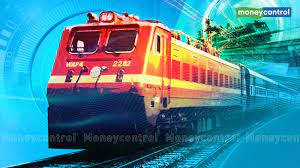Railways finance in dire straits!
By M.Y.Siddiqui
Latest report of the Comptroller and Auditor General (CAG) tabled in Parliament in the monsoon session 2023, has flagged that Indian Railways could not generate a net surplus from its gross earnings of freight traffic, passenger services and sundry segments during 2021-22 ending March 31, 2022, compared to 2020-21. It points out funds for pension schemes were diverted for publicity of other schemes (It is PM,s personalized publicity as is the case in all development funds of Ministries/Departments that CAG report has not mentioned for obvious reasons). Operating Ratio (OR), the gap between earnings and expenditure, during the period was 107.39 in 2021-22 against 97.45 in 2020-21. It meant Railways spent 107.39 paise to earn 100 paise (rupee one). A higher OR indicates a poorer ability to generate surplus. As compared to the OR of 97.45 during 2020-21, there was deterioration in 2021-22.
According to the CAG report, against the target of 96.15 OR, Railways spent Rs. 107.39 to earn Rs.100. Compared to the previous five years, OR was the highest in 2021-22. In 2017-18, OR was 98.44, followed by 97.29 in 2018-19, 98.36 in 2019-20, 97.45 in 2020-21 and 107.39 in 2021-22. …”The OR of Indian Railways reached an all time high of 107.39 percent in 2021-22, the report said quoting the five years figures. CAG report found that the gross traffic receipts increased by 36.02 per cent during 2021-22 compared to 2020-21 on account of increased passenger earnings and freight earnings. However, total expenditure increased by 35.19 percent, capital expenditure increased by 22.61 percent. On the other hand, revenue expenditure increased by 49.30 percent during the year. Total working expenditure incurred was 75.83 percent on staff costs, pension payments and lease hire charges on rolling stock. It also found that the Railways incurred additional expenditure of Rs.7, 778.43 crore more than the sanctioned budget of Rs.5,762.20 crore.
In financial year 2021-22, the Railways recorded a loss of Rs.15, 024.58 crore. Parliamentary Standing Committee on Railways has pulled up Ministry of Railways for revenue losses. In the current financial year 2023-24, allocation of Rs.2.40 lakh crore for the Railways has been made. This is the highest ever outlay and nine times the provisions in the financial year 2013-14. In the current financial year, the national bulk transporter earns Rs.145-150 crore per day ferrying passengers across India with annual accretion of Rs.53, 000 crore. Freight trains remain operational at 60 percent capacity due to demand slackness from the closure of industries and factories or unannounced recession. Nation’s four major railroads still have less traffic than a decade ago. However, Railways registered a record revenue of Rs.2.39 lakh crore in 2022-23, up by nearly Rs.49,000 crore from the previous year 2021-22, marking a growth 0f 25 percent. In 2022-23, with the net income after deduction of establishment costs remaining at Rs.4, 464 crore.
Railways finance have a total shareholder equity of Rs.454.78 billion and total debt of Rs.4, 198.4 billion, which brings its debt-to-equity ratio to 923.3 percent. Current RSS Pariwar union government has ruled out full privatization of Railways. However, several components of Railways departmental units, public sector units, special purpose vehicles for completion and fructification of many railways projects including ticketing arms, Indian Railways Catering and Tourism Corporation (IRCTC) have been divested/privatized partly. Government intends to privatize the operations of the Dedicated Freight Corridors (DFCs), intended to be highly remunerative to the Railways, when it becomes operational. On July 1, 2020, Ministry of Railways announced 151 trains in 109 pairs of routs would be operated by private sector comprising 5 percent of 2,800 mail and express trains, tentatively by the end of this year (2023) in 12 clusters.
Other problems facing the rail privatization are that Indian Railways are for the welfare of the country’s people. Privatisation will make Railways profit based, which will be out of reach of poor people. Poor cannot afford other modes of transportation because of their prohibitive costs. They travel in bulk by trains to and from towns, cities, and industrial/commercial destinations for their livelihood. Railways have advantages over other modes of transports as it connects every small and large parts of the country. Simultaneously, in a world growing more urbanized, rail travel is well matched to urban needs. High-speed rail serves as alternative to short distance air travel. Conventional and freight rail complement other transport modes (multi-modal transport) to provide efficient mobility.
Some other worrying signs of Railways finances include heavy debt burden of more than rupees six lakh crore that the national bulk transporter has borrowed from domestic capital market, external commercial borrowings, bilateral and multilateral funding agencies. In addition, Railways have its borrowing arm, Indian Railways Finance Corporation (IRFC), which has been raising resources annually since it was founded in 1987 that helps it to buy rolling stock and lease them to Indian Railways for use on profit sharing basis. This is considered a debt trap which may impede improving its finances. When economy is buoyant, Railways generate surplus. Presently, it carries only 60 percent freight traffic indicating recessionary trends in the country’s economy!
Powered by Froala Editor




LEAVE A REPLY